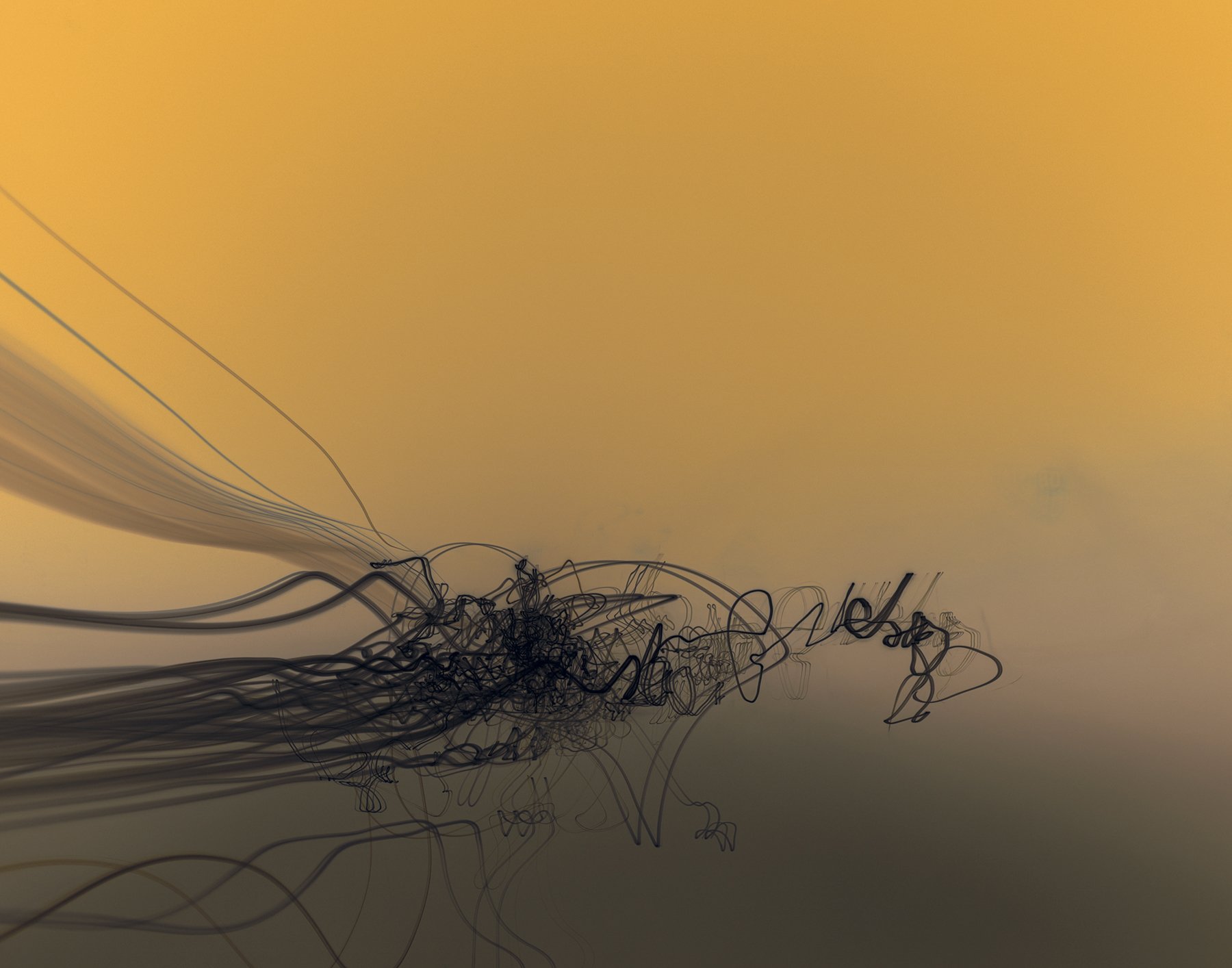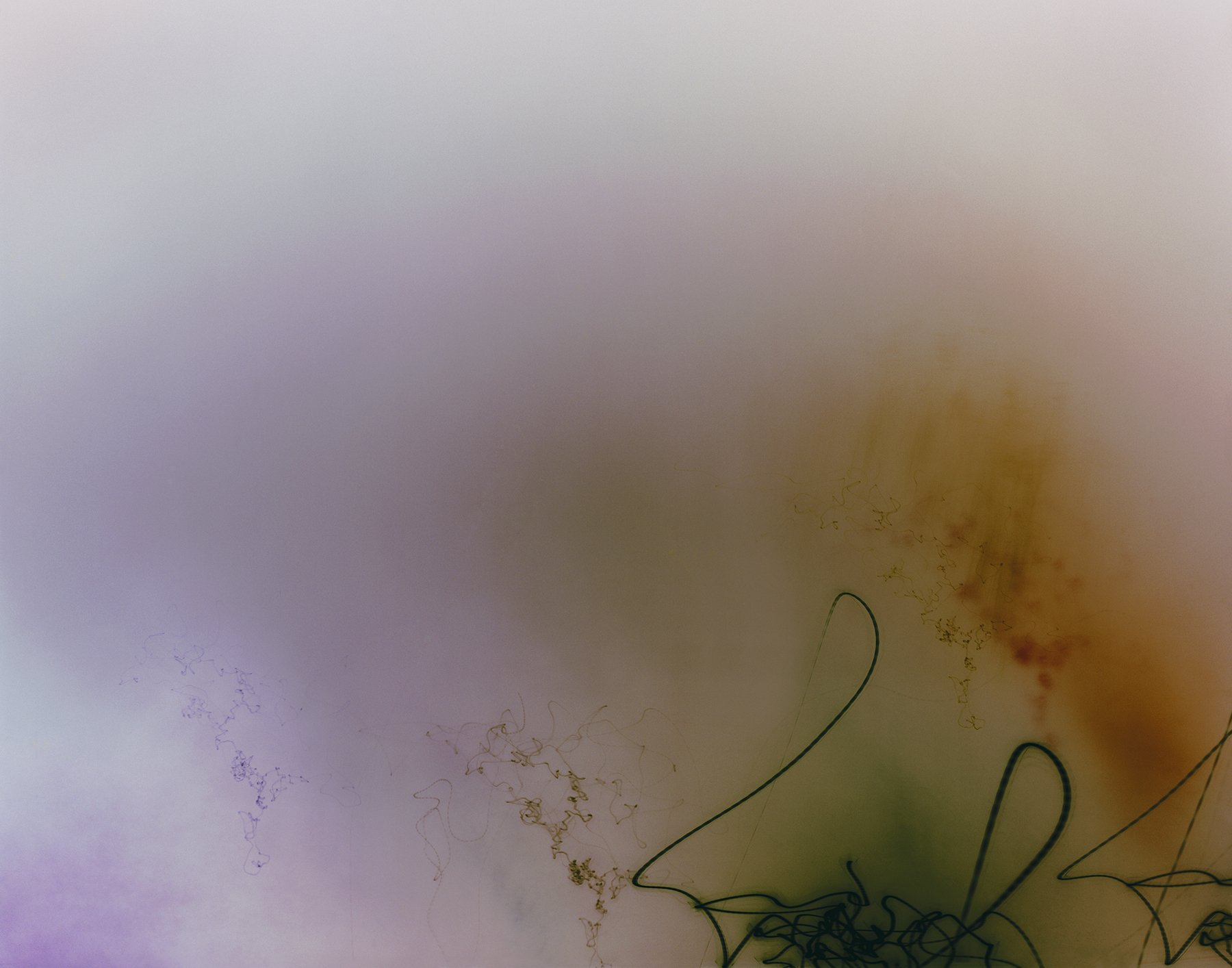New Landscapes
In the series New Landscapes the photographs are taken from famous metropolises, buildings, factories, cemeteries, airports, towers - mostly strategically important places involving a mixture of lights in the scenery and a long exposure so that they become almost like short movies. These urban landscapes are basically drawings of body movements that can be seen on photographic material as rhythmical light lines where subject and the scenery melt into a single image. Pictorial motifs are divided into different surfaces; the abstraction and pictorial surface, into the human presence (breathing, heartbeat, laughter, talking, walking during the exposure time) and into the photography as media which in this case is moving closer a painting. The subject is still strongly presented, whereas the object - the scenery- is estranged and thus becomes easier to deal with. The works are often named geographically: Basel, New York´s Brooklyn Bridge, the Airport of Ponta Delgata, the port of Helsinki, the A5 autobahn in Germany. The New Landscapes follows my sociological interest towards individual who is sensing, understanding and placing herself in the outside world. The figurative language; minimalism and the reduction of information is more a visual method, which have references to symbolic or linguistic meanings (emptiness, infinity) but also it can been seen as an art historical references to modernist painting. As a result of all these pictures become concentrated narrations of recognition and moment aswell as large colour abstractions that have profound significance of the surrounding reality.
“Nanna Hänninen documents with seismographic precision, the interplay between the movements of the real world before her eyes and her own world, her movements, her breathing and laughter, her hesitation. What we find here are highly abstract photographs with semi-translucent, intangible backgrounds and sketchy undulating movements, with lines contracting, expanding and entangling, with fields and clusters of color.” (Urs Stahel, 2007.)

Installation view at Serlachius Museum Gösta, Finland, 2020

Installation view at South Jutlands Museum of Art in Tœnder, Denmark 2008

Installation view at Fiedler Contemporary, Cologne, 2004

Airpor of Ponta Delgada (Açores), 2005, Size 110x140 cm

Main Road E 75 in Lapland 2006, Size 158x200 cm

30 km on the Road towards Rovaniemi City 2006, Size 158 x 200 cm

Jyväskylä Skyline # 1 (Laughing) 2006, Size 158 x 200 cm

Brooklyn Bridge Triptych 2004, Size 92x350 cm

Townhall_of_Kuopio (Breathing) 2005, Size 110 x 140 cm

Düsseldorf and River Rhein 2006, Size 110 x 140 cm

Manhattan B 2004, Size 110x140 cm

Zürich City (Breathing) 2006, Size 110 x 140 cm

Manhattan D 2004, Size 110x140 cm

Manhattan F 2004, Size 110x140 cm

Yellow Manhattan Diptych 2004, Size 110x280 cm

Autobahn A5 2005, Size 110x140 cm

Foggy_Scene #1 2005, Size 158 x 200 cm

New_Graffiti # 1( Churchyard) 2005, Size 158 x 200 cm

New Graffiti # 2 (Churchyard) 2005, Size 158 x 200 cm

Street Lights from the moving Car 2006, Size 110x140 cm

Tower of Puijo Diptych 2005, Size 110x280 cm

Japanes_Garden #1 2005, Size 180x105 cm

Basel # 2 (From Sankt Anton) 2006, Size 110x140 cm

Basel from Sankt Anton Diptych 2006, Size 158 x 400 cm

Electric Power Plant of Kuopio 2006, Size 110 x 140 cm

Factory # 1 (Breathing) 2006, Size 110 x 140 cm

Factory # 2 (Breathing) 2006, Size 110 x 140 cm

Installation view at South Jutlands Museum of Art in Tœnder, Denmark 2008

Installation view at South Jutlands Museum of Art in Tœnder, Denmark 2008

Installation View at Umeå Bildmuseet, Sweden, 2006

Installation View at Umeå Bildmuseet, Sweden, 2006

Installation View at Gallery Laurin 2005, Zürich

Installation view at Kuopio Art Museum, Finland, 2020